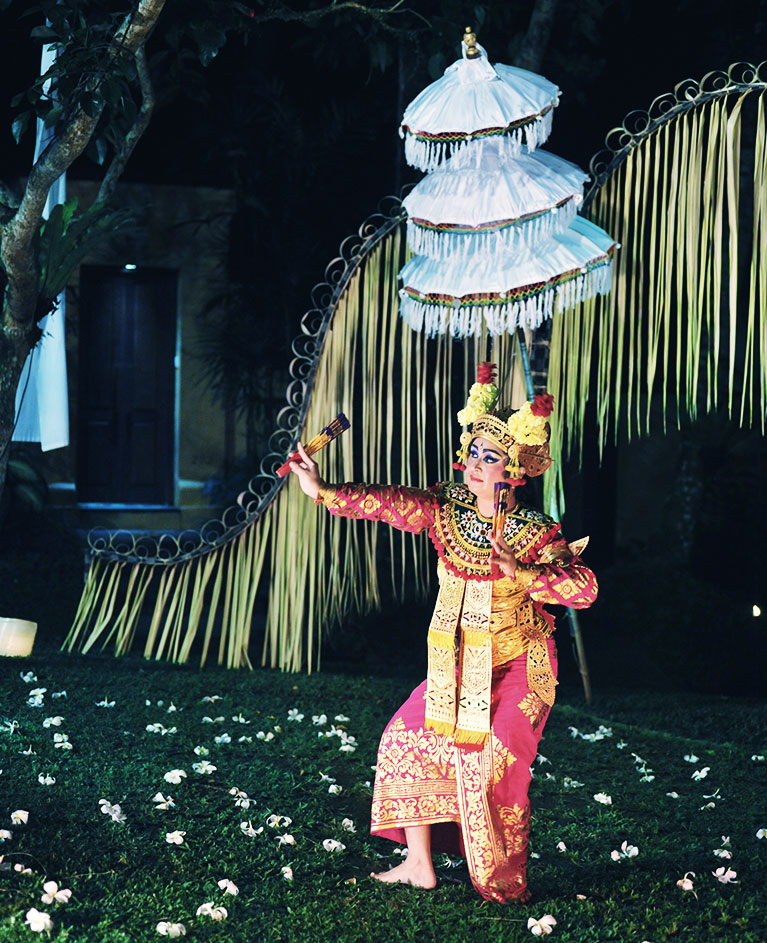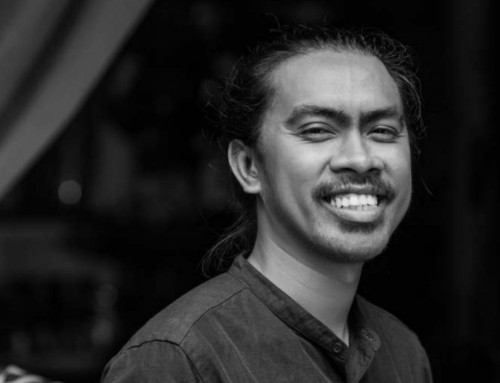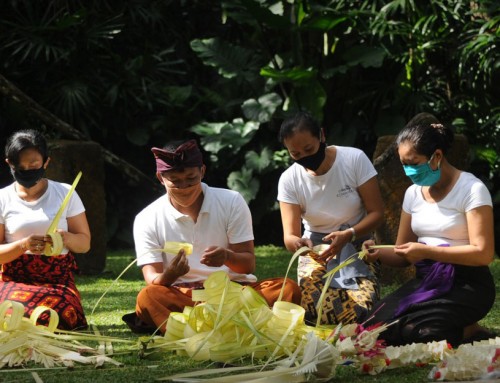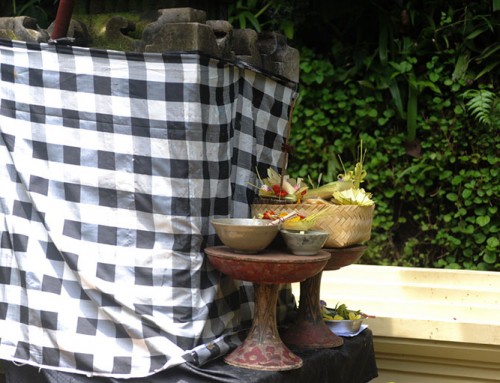Legong is the ultimate classical Balinese dance. Refined, complex, and extremely demanding physically, it is traditionally performed by pre-adolescent girls, who begin learning it as young as the age of five.
Legong is usually danced by two identical dancers who move in unison. They are often preceded by a third dancer, called a condong, in a role that calls for special agility and quickness. The choreography is highly stylized, to be enjoyed for its own beauty; but the dance develops into one of a number of storylines, danced in an abstract manner.
The most widely performed Legong story tells of the King of Lasem who discovers the Princess Langkesari lost in his forest. He kidnaps her and tries to seduce her, but to no avail. Her family wages war on him by means of a bird of ill omen.
No one is sure of the origins of Legong. During Bali’s feudal era (which lasted into the twentieth century), Legong was performed in the royal courts of Bali’s many small kingdoms. According to legend, the eighteenth-century king I Dewa Agung Made Karna had a vision of heavenly nymphs dancing. When he awoke from his meditation, he taught his villagers the beautiful music and dance he had seen. Others trace the origins of Legong to nine sacred masks brought from Java many centuries ago. These masks are still kept in a temple near Ubud. The masked Legong (Legong Topeng) is danced only on special ritual occasions. The masks are so sacred that they may not be touched except with a piece of cloth held in the right hand.













Leave A Comment